
Durable yet soft enough to be workable, marble occurs in both solid and patterned colors from snow-white to a rainbow of soft pastels. With its fine grain, marble takes a gleaming polish and can be worked in great detail.
Because marble occurs in massive formations, it can be quarried as blocks suitable for the largest sculptures and most ambitious architectural applications. To many sculptors, marble's most appealing quality is its slight translucency which imparts a subtle glow to the polished stone.
OUT OF LIMESTONE
For all its beauty, marble originates as drab limestone, a common sedimentary rock that forms through the accumulation of shells, coral and other organic materials. Limestone consists primarily of the calcareous carbonate minerals calcite (calcium carbonate) and/or dolomite (calcium magnesium carbonate).
Most limestone is dark-gray in color; higher grades containing more than 70 percent carbonates have lighter-gray colors. With its dull luster and poor polishing qualities, limestone is not a particularly attractive rock.
But because of its abundance and low cost, it is widely used for exterior building blocks. Its biggest use, however, is as the raw material for manufacturing portland cement.
When subjected to metamorphic heat and pressure, high-grade limestone undergoes a dramatic change. It first takes on a plastic consistency as its fine-grained, crystalline structure is destroyed and many of its impurities driven off. Then, with reduced heat and pressure, this plastic mass recrystallizes as marble with a substantially higher carbonate content and a structure of interlocked grains of translucent calcite and/ or dolomite.
THE MAGIC OF MARBLE
This story is from the December 2022 edition of Rock&Gem Magazine.
Start your 7-day Magzter GOLD free trial to access thousands of curated premium stories, and 8,500+ magazines and newspapers.
Already a subscriber ? Sign In
This story is from the December 2022 edition of Rock&Gem Magazine.
Start your 7-day Magzter GOLD free trial to access thousands of curated premium stories, and 8,500+ magazines and newspapers.
Already a subscriber? Sign In
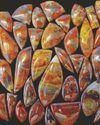
MORGAN HILL POPPY JASPER
In California, there are very few places to collect semi-precious stones. Many locations from the past have been either exhausted of the material or the land has been developed.
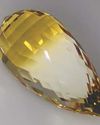
THE ACORN
The briolette gemstone has the same design attributes of a regular gemstone, however, the pavilion is elongated and the crown is usually domed. This is perfect for an elegant pendant, earrings or a pendulum.
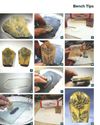
HOW TO PUT A PROTECTIVE CAP ON A CAB
To protect a specimen cab, often a cap is needed. In my case, I had a slab with the because of the color of the background and the pattern. This background had a more silicified consistency than most sandstones. It had no graininess like most sandstone, so I'm inclined to compare it to a jasper. The pattern was typical of a dendrite.

The Resilient Revival of Anne Brontë & Her Stones
For the first time, the Anne Brontë rock collection underwent complete description and identification, and along with Professor Hazel Hutchison of Leeds University and Dr. Enrique Lozano Diz at ELODIZ (a company specializing in spectroscopy analysis), an analysis of that collaboration, Anne Brontë and Geology: A Study of her Collection of Stones, was published in April 2022 in Volume 47, Issue 2 of the peer-reviewed journal, Brontë Studies & Gazette.\"

Amazing Women with Rock-Solid Careers
Explorers, Geologists, Educators & Jewelry Makers...
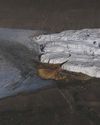
The Case of the Bleeding Glacier
It's a gory sight called Blood Falls. Ever since British geologist Thomas Griffith Taylor first noted it in 1911, it has been a mystery.
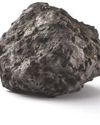
Asteroid Samples Are Said to Hold Invaluable Secrets
If Only Scientists Can Pop the Lid!

Paleontologists Embrace a New Method for Seeing Fossils within Rock
Fossil bone can be delicate. Attempts to remove it from a hard rock matrix by picking and scratching or etching with acids can be time-consuming and/or may end up obliterating that which you hope to study.

Need a Map of the Ocean Floor?
Call in the Seals!

A Step Closer to Hydrogen, the "Climate-Friendly Fuel"
As I reported last June, the world is racing to find sustainably renewable, nonpolluting sources of energy to replace our carbon-based reserves of coal, oil and gas.